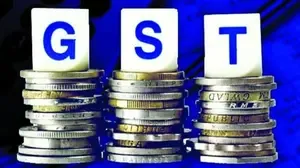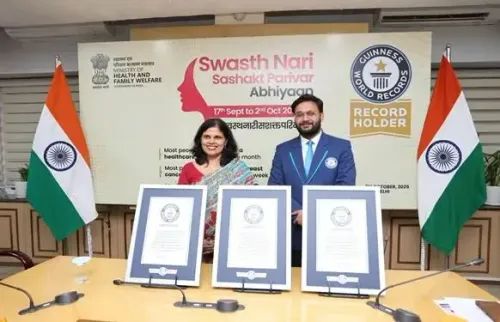How Are GST Reforms Enhancing India’s Consumption and Demand?

Synopsis
Key Takeaways
- GST 2.0 has positively impacted India’s economy.
- Consumer durables output increased by 5.4%.
- Rural FMCG sales surged by 8.4%.
- Retail sales of vehicles grew by 34.8% during Navratri.
- GDP growth forecast revised upwards by IMF and RBI.
New Delhi, Oct 27 (NationPress) The introduction of GST 2.0 has begun to reveal a beneficial impact on India’s economy, as indicated by data from the Finance Ministry on Monday, showcasing strengthened consumption patterns, increased sales across vital sectors, and enhanced consumer confidence.
This reform, aligned with the festive season, has catalyzed demand and is anticipated to further elevate growth momentum in the upcoming months, as per the monthly economic review for September 2025.
The application of reduced GST rates has spurred both consumption and investment in various sectors, contributing to the creation of more job opportunities, the report highlighted.
Demand conditions during the second quarter of FY26 have demonstrated notable improvement, buoyed by strong performances in high-frequency indicators.
Output for consumer durables witnessed a growth of 5.4 percent in July and August 2025, compared to 2.6 percent in the first quarter of the financial year.
Urban fast-moving consumer goods (FMCG) sales maintained a steady rate of 4.1 percent during the same timeframe, while rural FMCG sales soared by 8.4 percent, indicating robust consumption in smaller towns and rural areas.
The overlap of Navratri celebrations with the implementation of GST rate reductions further buoyed consumer sentiment.
Consequently, retail sales of passenger vehicles surged by 34.8 percent year-on-year (YoY) during the Navratri period, driven by new buyers and upgrades to premium models.
Sales of two- and three-wheelers also experienced a 35.3 percent increase, while tractor sales in September reached an all-time high, supported by positive monsoon conditions and rural purchasing power.
The increase in festive spending was also evident in digital transactions, with the average daily volume and value of UPI payments significantly rising in October compared to the prior month, reflecting strong demand fueled by GST reforms and festive enthusiasm.
Economists predict that the momentum established in the second quarter of FY26 will persist in the months to come, underpinned by resilient domestic activity and a recovery in demand.
The recent rationalization of GST, particularly on essential and high-value commodities, is expected to sustain consumption and foster job creation.
In a challenging global environment marked by trade policy uncertainty and elevated US tariffs on Indian goods, India’s domestic resilience has been noteworthy, as stated in the report.
High-frequency indicators reveal positive trends, while GST reforms and festive season demand have helped the economy retain its growth pace.
Reflecting this optimism, both the International Monetary Fund (IMF) and the Reserve Bank of India (RBI) have revised India's GDP growth forecast for FY26 upwards.
The IMF now anticipates the economy to grow at 6.6 percent, while the RBI projects a slightly higher 6.8 percent.
Analysts believe that the recent GST rate reductions will assist in keeping inflation moderate while continuing to bolster household spending.









